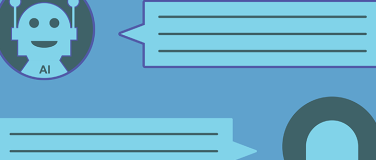As Charles Darwin famously said, “It is not the strongest of the species that survives, it is the one that is most adaptable to change.” Every industry is affected by digital transformation, and every company is grappling with how to cope. This is Enterprise Darwinism.
In response to these external changes, there is an emergence of IT teams evolving to think and operate differently. Before, IT was an order-taker – when a business unit needed anything to do with technology, a request would be sent to central IT.
The advent of cloud and mobile, as well as new digital competition, breaks down this traditional IT operating model. Today, new applications are being built with or without IT involvement, often creating problems when going solo. IT needs to find new ways to enable the business to build their own applications, analytics and new digital experiences demanded by their consumers. IT is moving to a model where they deliver reusable assets – building blocks – that the business can build on.
To do this, enterprises need to be composable, they need to take an API-led approach to connectivity. This approach organizes business from a technology perspective, providing a view of the organization based on reusable capabilities, and enable other consumers outside of IT to leverage them. This is a new operating model because it not only changes their behavior to deliver more capabilities and fewer projects but critically they have to teach and enable the business to consume the capabilities to build their own projects. To support this new IT operating model, a new organizational capability is required – a Centre for Enablement (C4E).
IT as a Business Enabler
A Centre for Enablement shifts the role and culture of central IT from delivering projects on a conveyor belt to enabling the business to serve some of their own needs.
To be successful, a Centre for Enablement must adopt a pragmatic approach to content delivery. Rather than being documentation-oriented, it must be asset-oriented. A Centre for Enablement will typically comprise of:
- Reusable assets, including application programming interfaces (APIs), templates, connectors and project accelerators
- Core processes focused on the engagement of stakeholders; enablement of assets and capabilities; and optimization of assets, cycle times and governance
- Organization with clear sponsorship, ownership, roles and responsibilities plus key capabilities and skills
- Governance reflecting an understanding of which governance structures could be considered constraints and which could be considered models of good agile practice
Centre for Enablement vs. Centre of Excellence
There are some perceived similarities between a Centre of Excellence with which many enterprises are familiar and a Centre for Enablement. The goal, focus, speed and audience of the two concepts are different. That is not to say that the role of the Centre of Excellence is no longer required – it will continue to be a core competency for IT.
However, changing business expectations require a Centre for Enablement to enable communities of developers both inside and outside of IT, to leverage and build on core IP using simpler reusable building blocks. This, in turn, enables more rapid delivery of projects and a wider group of people being able to deliver projects that adhere to core standards and governances rules.
Establishing a Centre for Enablement
The first set of assets and content for publication in a Centre for Enablement need to trigger the transformation and also meet requirements dictated by business strategy and critical projects.
The Centre for Enablement can be federated allowing other communities within the organization to build on the foundational assets with assets relevant to their applications, data and device landscape. For example, a digital employee could adopt Salesforce as a core platform and would require a specific set of assets or capabilities to connect this to other systems or processes. Central IT may not even be involved in delivering these assets.
For this to happen, these assets need to be assembled from core Centre for Enablement assets with built-in governance and security. A light approach to evaluating the performance, adoption, suitability and reusability of assets – regardless of where they are created – will be key.
Audiences
To enable new audiences within an organization to leverage assets, the Centre for Enablement needs to understand their motivations and provide them with the key capabilities, data, and consumption model best suited to their need.
Organisation
The Centre for Enablement needs to be integrated with the wider landscape of other teams, departments, and processes – leveraging possible synergies and spreading innovation across the organization. This requires:
- Clear language: The different competency teams must set up a common vocabulary. For example, if the SOA team uses the term ‘service implementation’ to refer to a set of components that implement a service, the line-of-business and mobile teams should use the same term
- Best-practice enablement: A team with best practices must recognize the value of roles in other teams and must incorporate the roles into its best practices. This will bring best-practice process knowledge from other disciplines and create an opportunity to link processes where appropriate. As much as possible best practices should be built into the consumable assets.
- Technology standards: Different teams (central IT, line- of-business, mobile) typically deploy products with overlapping capabilities. Tools and information access repositories should be standardized where possible.
- Tooling Integration: A strong focus on a shared model, assets and IP will enable the seamless integration and semantic consistency of various tool types, as well as agility in shifting between integration patterns.
Organizational design will depend on the nature of the organization. For many organizations, a DevOps team that can build and operationalize APIs is often a new role that can be filled with existing team members. One of the key roles for a Centre for Enablement is one or more ‘enablers’ who work with consumers to help them consume assets and capture feedback for improvements.
Planning
Detailed planning for the execution of the Centre for Enablement requires the above to be agreed and confirmed. In general:
- Start with business-facing consultation to ensure alignment with business priorities
- Identify one or more immediate projects where the API-led connectivity approach can be used to create reusable APIs (usually on top of existing data)
- Open up and make available key existing data
- Provide assets on the basis that feedback and improvement are expected and required. Consumers will rather get their hands on APIs that fulfill 80 per cent of their requirements in 20 percent of the time, than 100 per cent of their requirements over a longer timeframe
- Prioritize customer APIs where there’s significant traction
IT for the 21st Century: Supporting the Composable Enterprise
The vision of the composable enterprise is inevitable in a world where technology is used in every corner of the business. It is a world where IT is a partner to the business. IT is no longer a back-office function. The Centre for Enablement represents a model for how to reorganize IT to support a shift from technology provider to strategic business enabler.
It is a pathway to successfully transform IT to support the ever-growing technology needs of every enterprise.
This is the first of four abridged extracts from Ross Mason’s new book ‘First, Break IT.’
This post originally appeared on ITProPortal.









